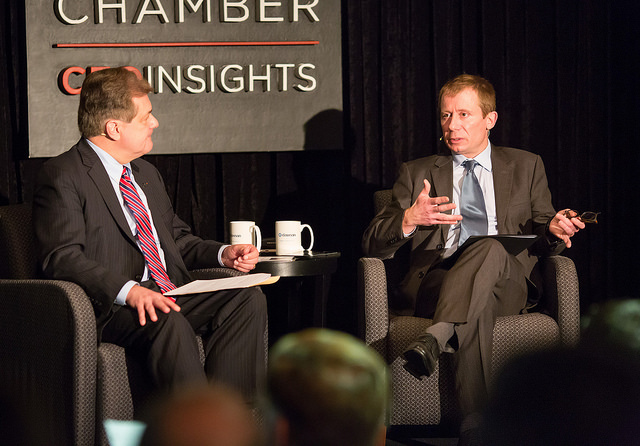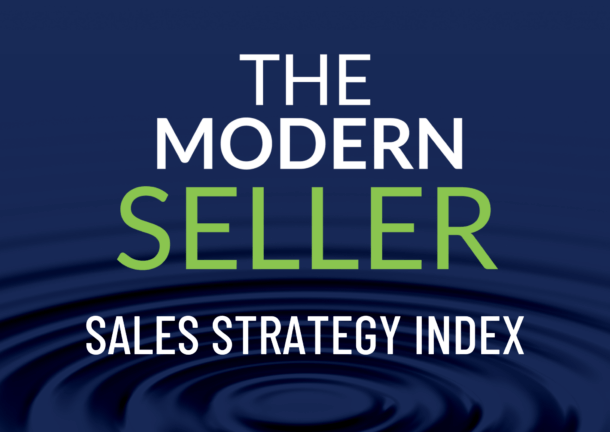A Conversation with Patrick Lockwood-Taylor of The Oneida Group
Growing up in Cleveland and going to college in Dayton, the only thing I knew about Columbus was the drive around 270. When I landed my first job out of college, it happened to be in Columbus. I knew nothing about our city, so I figured I’d stay for a year or two before moving on. Fast forward 21 years later, I never left, and I’m excited to call Columbus home.
I see Columbus as being synonymous with opportunity. One of the things we’re known for is our open, collaborative spirit. And one of the ways we see this is with the CEO Insights events, hosted by the Columbus Chamber. The CEOs who participate are also open and collaborative, sharing their histories, challenges, and successes.
CEO Insights recently featured Patrick Lockwood-Taylor, CEO of The Oneida Group. He came to The Oneida Group nearly two years ago, after a global career with P&G. He sought out this role, and he persuaded the board to bring him on.
With his experience in startup and turnaround businesses, Patrick saw it as an opportunity to combine his career experiences into a single role. It was also an opportunity to turnaround two iconic brands, Anchor Hocking® and Oneida®, each with over 100-year histories in the market.
In this post, I share eight key takeaways from Patrick’s conversation with Chamber President Don DePerro.
1. “We’re a Central Ohio company. These are our roots and will be our future.” There’s a strong belief in community; Patrick believes that a strong company creates a strong community and corporate culture. Those two iconic brands, Anchor Hocking and Oneida, are part of the fabric of Central Ohio. The talent, strategic partners, and support in the Columbus Region are what create the community and culture.
2. A culture shift from approval to accountability. At the very beginning stages of the business turnaround, Patrick took for granted that there was an accountability culture at The Oneida Group; however, that wasn’t the case when he got there. To make this cultural shift over time there were a few things that he implemented:
- From a leadership standpoint, it’s what employees see you do that matters.
- Greater ownership at all levels means moving away from a culture where we seek approval to one where we make decisions with accountability, contributes to the overall company improvements.
- Putting the right people to the right work creates meaning for employees, beyond the product.
- When there’s a problem, get it to the lowest possible level of the organization for a solution.
3. Think cross-company. To create consistencies and leverage strengths, it’s important to look at the entire, integrated opportunity for the company. In the case of The Oneida Group, there were too many silos within the organization to be effective at cross selling or finding other integration points. Walmart was an example where they were only selling one product line, and not making inroads with others.
4. Big thinking, detail oriented. In a legacy organization like The Oneida Group, it takes some specific skills to craft a turnaround. There must be humility in the executive team, and a willingness to pace the organization to keep engagement. One other key skill is the ability to move fluidly between the 20,000-foot strategic view and microscopic detail at the execution view.
5. The high-energy fuel for a successful turnaround? Confidence. The Oneida Group’s team exudes a confidence that they can and will succeed, and this is modeled throughout the organization. Confidence is especially critical in a turnaround environment.
6. Trust above all. The single most important attribute a brand has is trust. Patrick explained that you must understand when and how people are interacting with your brand and category, so you can match that to the occasion. For example, there are 14 occasions they’ve identified at The Oneida Group, and they work to be at the top of the category for those occasions. The only way you can be at the top of a category is with quality and trust.
7. Strategy is never done. In the case of The Oneida Group’s history, it became important to leverage their assets and what they were already known for. This turnaround has been a case of both renewal (new strategies and innovation), while also leveraging their assets (history and brands). Every 12-18 months they review their strategy at a high level, but every day they’re looking at execution.
8. You cannot cost cut to success. This turnaround is an investment at all levels, and it has taken a community to do it. If you think you can cost cut your way to success, you’ll run out of runway at some point. And then, you’ll run out of relevance.
For more great tips from the CEO Insights series, read my past posts.


 Our Strategic Selling signature sales training program is now available online. This online sales learning program is ideal for professional services and B2B sales. Get started with 2 free lessons.
Our Strategic Selling signature sales training program is now available online. This online sales learning program is ideal for professional services and B2B sales. Get started with 2 free lessons.